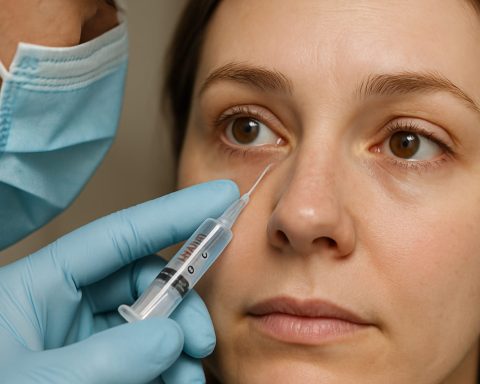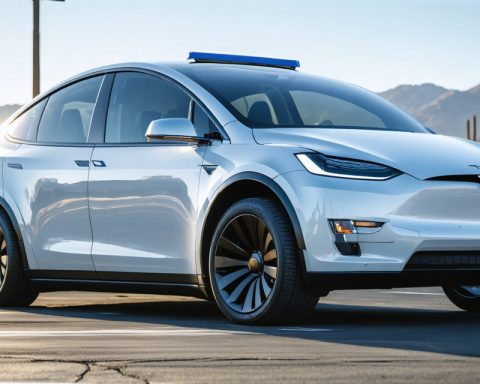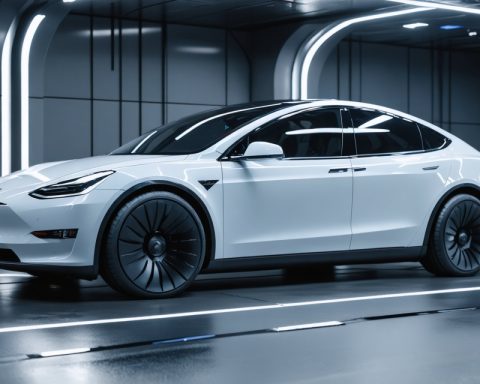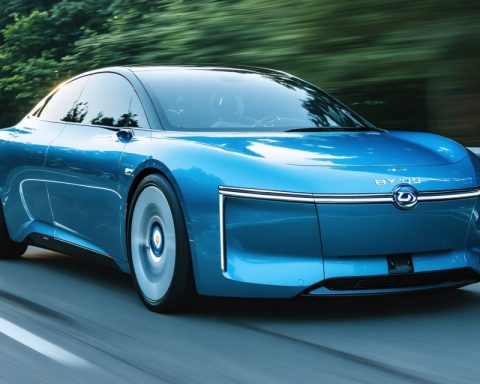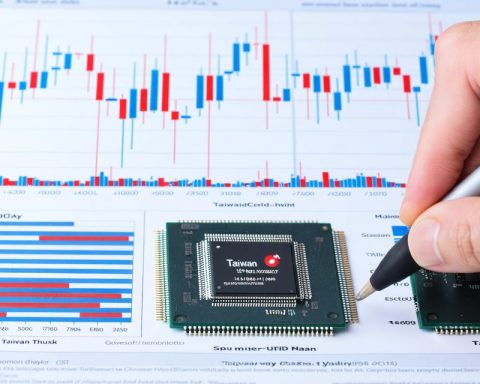- Ouster, Inc. is advancing Lidar technology, essential for the future of autonomous vehicles and urban safety.
- Lidar sensors by Ouster help reduce traffic accidents by creating rapid digital maps, enhancing safety and efficiency.
- Q3 2024 saw a 26% revenue increase, with Ouster shipping over 3,900 REV7 sensors, despite a $10 million adjusted EBITDA loss.
- The BlueCity traffic management system is implemented in Chattanooga, Tennessee, across 120 intersections to decrease congestion and enhance safety.
- Ouster’s stock showed significant growth, increasing by 81.47% over 12 months, signaling strong market potential.
Ouster, Inc. may not dominate the financial headlines, but its contributions to Lidar technology are paving a path hotter than asphalt on a July afternoon. As the autonomous vehicle future draws ever closer, the Light Detection and Ranging (Lidar) sensors crafted by Ouster are poised to leapfrog conventional paradigms, giving machines eyes sharper than a peregrine falcon’s.
Amid a world where 1.35 million lives evaporate annually due to traffic mishaps, Ouster’s Lidar sensors craft a digital topography of surroundings at lightning speed. This enables machines—and hopefully soon, entire cities—to forgo reckless human error.
The numbers paint a compelling portrait. Revenue soared 26% in Q3 2024, fueled by robust demand for their cutting-edge REV7 sensors. More than 3,900 of these high-performance devices were shipped, each a soldier in the battle for safer, smarter roads. Despite an adjusted EBITDA loss, the blueprints show improvement—a loss trimmed to $10 million—signifying financial resilience.
Chattanooga, Tennessee, a living laboratory, has embraced Ouster’s BlueCity traffic management solution across 120 intersections. There, their sensors weave a digital tapestry of traffic flows, aiming to untangle congestion like a masterful conductor orchestrating a symphony. Tim Kelly, Chattanooga’s visionary mayor, sees it as the vanguard of a smarter, safer urban landscape.
But Ouster’s saga isn’t merely local. This ingenuity could soon be a mercantile staple, expanding to metropolises nationwide. The stock’s ascent—an 81.47% climb over 12 months—reflects a potential kraken of untapped revenue stretching beyond the horizon.
The tale unfolds as Ouster looks to paint cities with its Lidar canvas. It stands ready to prove that in a world hungry for safety and efficiency, its sensors might just be the keystones of a future free from the grip of human error.
Ouster’s Lidar: The Secret Ingredient for Smart Cities and Autonomous Vehicles
How-To Steps & Life Hacks
Implementing Ouster’s Lidar technology in urban planning and autonomous vehicles involves several steps:
1. Assess Existing Infrastructure: Identify areas where Lidar sensors can be integrated, such as intersections, roadways, and transport hubs.
2. Collaborate with Local Governments: Work closely with city officials to ensure compliance with regulations and to obtain necessary permissions.
3. Deployment and Installation: Install Ouster’s REV7 sensors at strategic points to optimize traffic management and enhance autonomous vehicle navigation.
4. Data Collection and Analysis: Use the collected data to monitor traffic patterns, identify bottlenecks, and develop solutions for congestion and safety issues.
5. Continuous Monitoring and Maintenance: Regularly update systems and software to ensure optimal performance and address any technical problems promptly.
Real-World Use Cases
– Urban Traffic Management: Cities like Chattanooga leverage Ouster’s technology to optimize traffic flows, reduce congestion, and enhance safety at busy intersections.
– Autonomous Vehicles: Lidar sensors provide crucial data for self-driving cars, enabling them to navigate complex environments with high precision.
– Infrastructure Development: Beyond traffic, Lidar is instrumental in city planning, construction site monitoring, and even in creating more efficient public transport systems.
Market Forecasts & Industry Trends
The global Lidar market is expected to grow at a CAGR of over 20% from 2024 to 2030. Key trends include:
1. Increased Adoption in Smart Cities: As urban areas seek efficient solutions for traffic and public safety, the demand for Lidar technology is set to rise.
2. Emergence of Lidar in Consumer Technology: Beyond autonomous vehicles and smart cities, consumer electronics like smartphones and VR headsets are beginning to incorporate Lidar features for enhanced augmented reality experiences.
Reviews & Comparisons
Ouster’s Lidar technology is often compared to competitors like Velodyne and Luminar. Here’s a quick comparison:
– Performance: Ouster’s sensors are known for high resolution and fast data processing, crucial for real-time applications.
– Price: Ouster offers competitive pricing, making their products accessible for broader deployment, especially in urban infrastructure projects.
Controversies & Limitations
– Initial Cost and Investment: While beneficial in the long run, the upfront costs for deploying Lidar systems can be significant, making it a potential barrier for some cities or companies.
– Privacy Concerns: The use of extensive sensor networks raises privacy questions regarding data collection and surveillance.
Features, Specs & Pricing
Ouster’s REV7 sensors boast features like enhanced resolution, longer range, and robust weatherproofing. Pricing varies based on volume and specific requirements, but Ouster aims to offer competitive pricing to spur adoption across industries.
Security & Sustainability
Ouster emphasizes cybersecurity in its sensor networks to prevent data breaches, which is crucial given the sensitive nature of the collected data. Moreover, the company commits to sustainable practices by reducing energy consumption in its manufacturing processes and product operations.
Insights & Predictions
– Future Expansion: With urban centers continually evolving, Ouster is positioned to play a pivotal role in the global expansion of smart city technologies.
– Technological Advancements: Continuous R&D will likely lead to more compact and energy-efficient sensors, broadening their application scope.
Tutorials & Compatibility
Learning resources for using Ouster’s products include webinars, whitepapers, and hands-on installation guides, ensuring customers can easily integrate these technologies into existing systems.
Pros & Cons Overview
Pros:
– High-resolution sensors improve traffic management and autonomous navigation.
– Compact and weatherproof designs enhance durability and applicability.
– Ongoing innovations aim for more efficient and eco-friendly operations.
Cons:
– Higher initial costs may deter some potential adopters.
– Privacy considerations need careful management, notably in public spaces.
Conclusion
Actionable Recommendations:
– Urban Planners: Start small by integrating Lidar in high-traffic intersections and expand based on data insights.
– Transport Authorities: Consider Lidar for autonomous vehicle initiatives to improve safety and urban navigation.
– Companies: Leverage data-driven insights for enhancing products with potential Lidar integration.
For more information on implementing Lidar technology, visit the Ouster website today.





